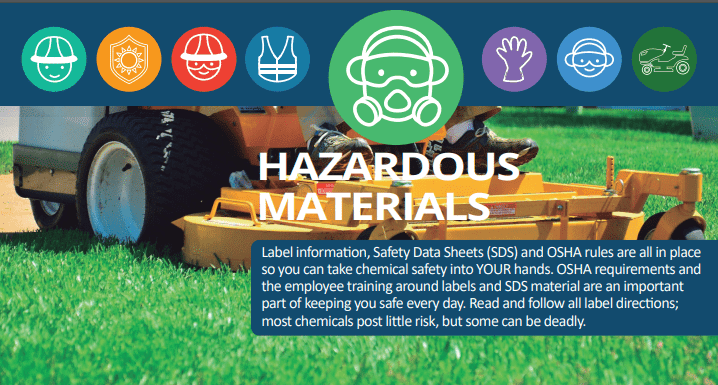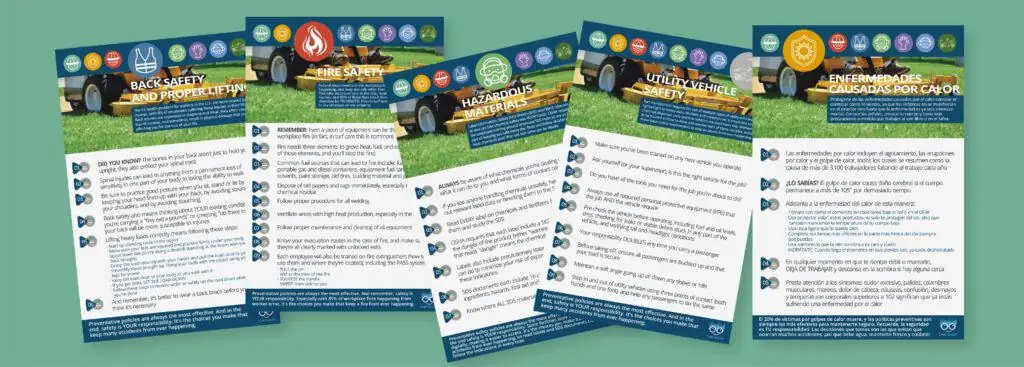
Most of us handle at least one type of hazardous material during a typical workday. And while most of these chemicals pose little threat to worker safety, others can be incredibly dangerous, especially if not handled properly.
Whether you deal with hazardous materials on a daily or occasional basis, it’s vital that you understand how to use, maintain, and store these materials properly.
Here are some crucial tips to keep you and those around you safe.
Know the chemicals you work with
You’ll need at least a basic understanding of each type of chemical you work with or could potentially work with. This includes knowing the name of the chemical as well as any risks associated with the substance and what types of contact, if any, can cause harm.
For example, is the chemical harmful when it comes in contact with the skin, or is there added risks involved if the substance gets into your eyes? Ensuring you understand these dangers every time you work with a chemical is the first step to creating a safe workplace environment.
Help keep the workplace safe
It’s vital for your organization as well as you and every other worker to make workplace safety a top priority.
You can take steps to create a workplace culture that reminds every member of the team to take personal responsibility by sharing these safety rules and guidelines.
You and other workers can also point out any safety concerns or issues you uncover to the rest of your team or to your superintendent. For example, if you observe a co-worker mishandling any type of chemical, you can professionally and privately bring it up with the co-worker and direct them to the SDS guidelines that explain proper handling.
Read all chemical labels
All chemicals are packaged with an informative label, and you’re responsible to read the label on every chemical you work with, before you even work with it for the first time. If you’ve been working the turf for a while, you can catch up by reading the labels of chemicals you work with on a regular basis.
And, although it’s a lot of reading, if you don’t go through the SDS for line you still need to know where they’re located and, in the case of any doubt about handling the chemical, what information you’ll find there. (We’ll get more into this below.)
OSHA requires that all chemical labels include a Signal Word to describe the level of danger for that specific substance. The most common Signal Words include Warning and Danger. You should know the meaning of these Signal Words. For example, a label with the word Danger means that the substance is highly toxic.
Chemical labels also include Precautionary Statements that provide proactive steps that you can take to minimize the risk of exposure to the chemical. These precautionary measures often include steps like using Personal Protective Equipment (PPE) like safety glasses, hard hats, gloves, and face shields. It’s vital that you not only read these Precautionary Statements but that you follow ALL the safety measures provided on the label.
Utilize SDS materials
OSHA regulations require every organization to provide you with easy access to all SDS materials. In fact, your turf management must keep an SDS on-hand for every chemical used in the workplace.
Some organizations have started storing these safety sheets digitally, otherwise they’re generally found in a hardcover notebook. You must know where SDS materials are and how to access them.
Learn how to read SDS resources
In addition to knowing where SDS materials are, employees also should know how to read and utilize this information correctly.
SDS sheets are uniform by design. Each sheet includes 16 sections that are displayed in the exact same order. The reason for this level of consistency across all SDS materials is to enable you to find the information you need when you need it.
Here’s a look at the 16 sections listed on every SDS sheet:
It’s vital that you familiarize yourself with the SDS for each chemical before working with it. And the more SDS sheets you read, the more capable you’ll be at finding the information you need as quickly as possible.
It’s crucial that you understand that all SDS sheets follow the same template. This will make your life easier my making it quick and intuitive to find the information you need.
For example, you should know that emergency contact information can be found in section one, that step-by-step first aid measure can be found in section four, that handling and storage information is in section seven, and that containment guidelines can be found in section six.
Your organization will offer training to help you understand the importance of SDS sheets and how to read them correctly. Taking these measures can help to create a safe work environment and reduce the risk of accidents and injuries in the workplace.
Ultimately, safety is your responsibility. It’s literally in your hands when working with hazardous chemicals. Your organization is responsible for providing the training and resources to promote a safe workplace environment, but it’s your responsibility to learn that training well and put it into action.
